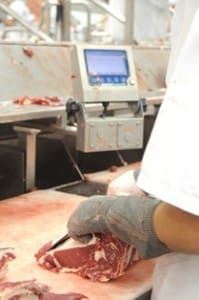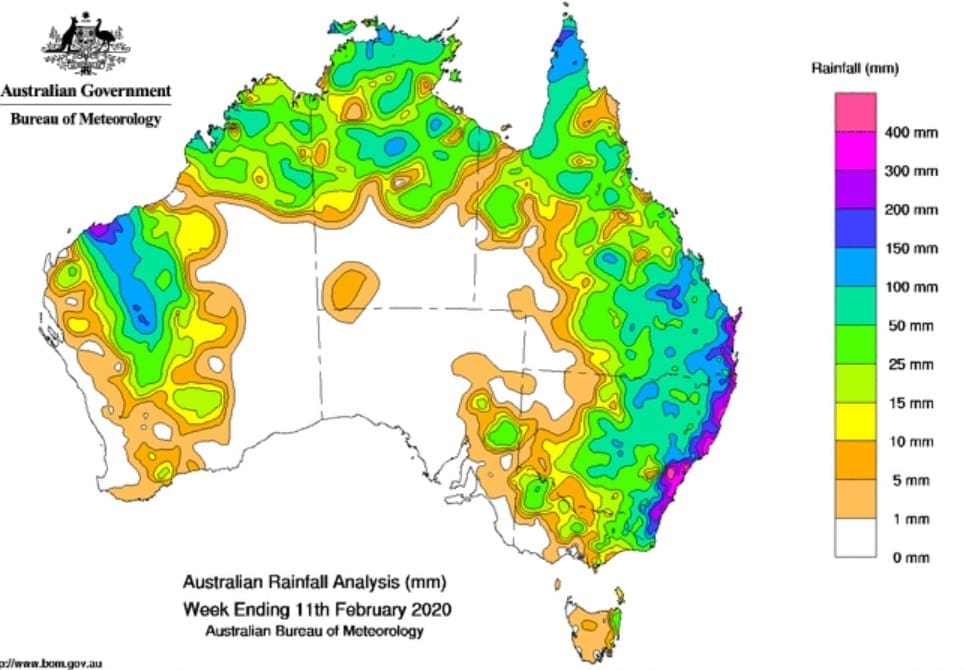MORE substantial rain across the eastern half of NSW and Queensland in the past seven days has made beef processing a day-to-day proposition this week, with plenty of large export plants planning to cancel shifts due to challenges in accessing stock.
On top of good earlier rain since January, falls of 50-100mm were common last week in key supply areas, making mustering and delivery operations challenging.
 While there have been some advances on already-high processor grid offers seen a week earlier, others have taken the view that ‘even more’ wet-weather money will not necessarily flush out more slaughter stock.
While there have been some advances on already-high processor grid offers seen a week earlier, others have taken the view that ‘even more’ wet-weather money will not necessarily flush out more slaughter stock.
All three export plants in central Queensland will drop shifts this week, while Townsville remains closed due to earlier wet weather infrastructure damage.
In southern Queensland, immediate kill prospects were described this morning as a ‘day to day proposition’, as livestock staff struggle to fill available slots.
Roads are cut in heartland cattle areas across parts of Central Queensland, with trucks waiting for conditions to improve, and paddock conditions in many areas make mustering impossible.
Wet weather money sees some grids rise again
In southern Queensland, most grids maintained the big rises seen a week earlier, when offers jumped 20-30c/kg, on top of another 20c/kg the week before.
Grassfed four-tooth steer prices remain at 590-620c/kg this week on Queensland grids, well above the previous record high of 600c/kg seen briefly last year.
Cows are now in increasingly short supply as herd rebuilding mentality starts to take hold, with one Queensland operator’s grid lifting to an unprecedented 580c/kg on Friday. Others remain in the 530-535c/kg range for heavy cows this week.
Central Queensland direct consignment rates remain much the same as southern parts of the state, as fierce competition emerges with live exporters also looking for heavy cattle to fill boats after rain interruptions to roads and paddocks. Typical Indo steers in Darwin are quoted at 350c/kg liveweight this week, reaching an 18-month high.
Significant losses are now being logged by processors on cows bought at current high prices, even with the A$ hovering near ten-year lows against the US$.

Saleyards boom continues
In the saleyards system, good cows remain in short supply, with plenty of examples making 300-315c/kg liveweight at sales across eastern states early this week. A 310c/kg liveweight cow equates to 613c/kg deadweight, as processor buyers struggle to buy the minimum quota needed to raise a kill.
At Roma store sale this morning, prices continued to improve due to the reduced supply and recent rainfall. Medium weight cows lifted in price by 9-11c, while heavyweight cows were dearer by 8-15c/kg. A large number of heavyweight score 4 cows off grain reached a top of 311.2c to average 301c/kg. See full Roma report tomorrow.
All classes of cows met strong competition in a smaller yarding at Gunnedah this morning, with restockers competing strongly on the plainer-conditioned lines. Market trends improving by 20-30c/kg liveweight. Prices for all cattle were dearer and significantly so in places, with lightweight steer calves attracted keen restocker competition to break the 500c/kg barrier.
Taking quality into account, the lightweight yearling steers to restockers experienced strong gains at Gunnedah, while medium and heavy feeder steers were well sought after resulting in significant price improvements. Yearling heifers to restock and feed sold to dearer trends of 20-30c/kg.
At NVLX Wodonga this morning, numbers remained high after last week’s significantly dearer market. Well finished trade weight steers jumped 48c, making from 320-378c/kg. The better shaped heifers suitable for the trade sold 14c dearer, making from 294-371c/kg. Well-finished heavy bullocks and steers were in reasonable supply. The better quality pens of prime C3 steers and C4 bullocks made from 302c to 332c/kg.
While eastern states slaughter numbers rose a little this week, that was on the back of an Australian day holiday-shorted week the week before.
The five states kill to Friday of 140,895 head was in fact back about 7pc on the previous full-week, completed January 24. Last week saw Queensland kill 68,539 head; NSW 36,886 head; Victoria 26,354 head; SA 4009 head and Tasmania 5107 head.
A clear sign of the dramatic turnaround in seasonal conditions was seen in the proportion of females included in weekly kills last week. Where both NSW and Queensland were consistently recording 55-57pc females in weekly slaughter during the depths of last year’s drought, in Queensland, the figure was dramatically lower at 40pc last week, while NSW recorded 53pc.
Expect to see substantially smaller eastern states kills next week, especially in Queensland and NSW.
